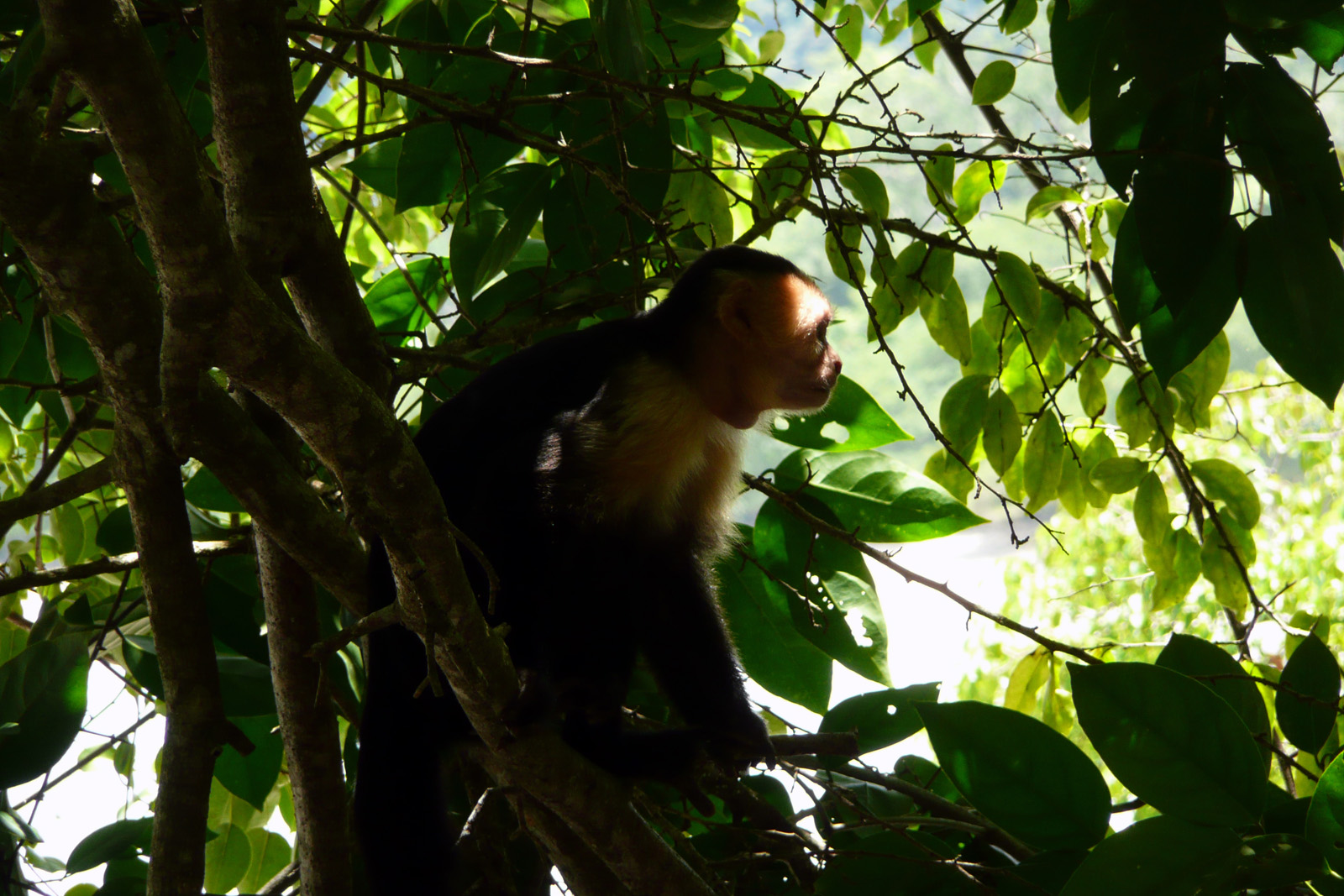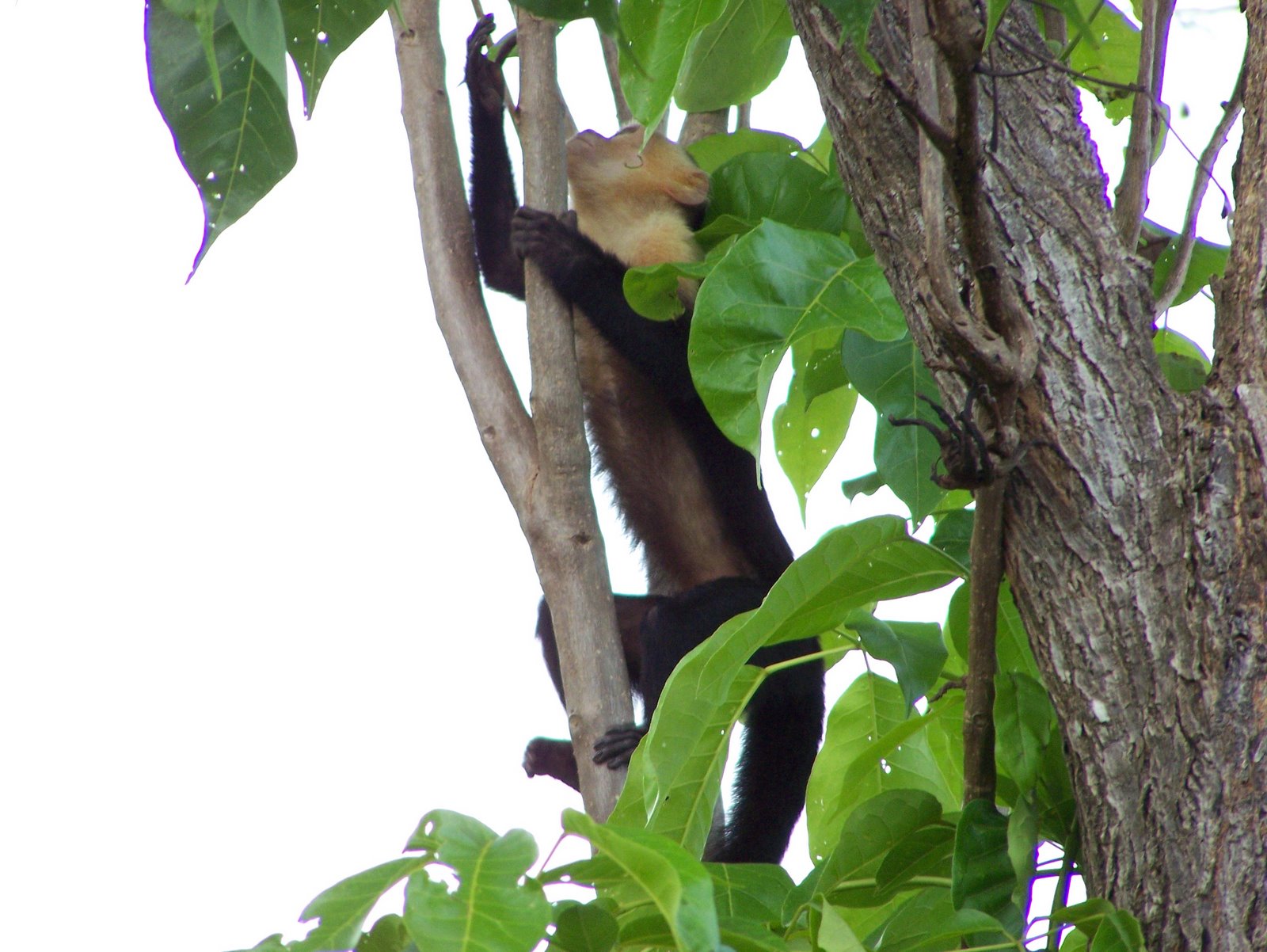Habitat and Geography
The white-faced capuchin monkey, (Cebus capucinus), prefers to live in habitats that are less developed, although they can quickly adapt to the local environment (Kavanagh 1984). Generally, the C. capucinus lives in the forests of South America. At times, they will cross an open
area to get to another forest, however there are no monkeys adapted
specifically to open areas (Richard 1985). This
species is one of the most spread out species because they can be found in a
very large range of land (Long 2012). C.
capucinus are found from Belize to northern Colombia and they are the
only species of a capuchin monkey to be found in Central South America.
C. capucinus are able to easily adapt to their environment and local
conditions (Kavanagh 1984). C. capucinus
live in a variety of forests but they favor dry deciduous forests with a
closed canopy (Long 2012).
South America. At times, they will cross an open
area to get to another forest, however there are no monkeys adapted
specifically to open areas (Richard 1985). This
species is one of the most spread out species because they can be found in a
very large range of land (Long 2012). C.
capucinus are found from Belize to northern Colombia and they are the
only species of a capuchin monkey to be found in Central South America.
C. capucinus are able to easily adapt to their environment and local
conditions (Kavanagh 1984). C. capucinus
live in a variety of forests but they favor dry deciduous forests with a
closed canopy (Long 2012).  C. capucinus can be found throughout all levels of the forest due to
the fact that they move throughout all of the levels in search of food
(Richard 1985). The C. capucinus are
often spread out, however the amount of forest that they disperse through
depends on how much food is available for them
(Kavanagh 1984). C. capucinus have the ability to jump up to
nine feet to move from tree to tree. Usually, C. capucinus reside
in the tops of trees but they will come down to the ground level to find
drinking water (Rainforest Alliance 2013).
C. capucinus are very important to the environment that they live in
because they pollinate flowers and disperse thousands of seeds as they move
about (Kavanagh 1984).
C. capucinus can be found throughout all levels of the forest due to
the fact that they move throughout all of the levels in search of food
(Richard 1985). The C. capucinus are
often spread out, however the amount of forest that they disperse through
depends on how much food is available for them
(Kavanagh 1984). C. capucinus have the ability to jump up to
nine feet to move from tree to tree. Usually, C. capucinus reside
in the tops of trees but they will come down to the ground level to find
drinking water (Rainforest Alliance 2013).
C. capucinus are very important to the environment that they live in
because they pollinate flowers and disperse thousands of seeds as they move
about (Kavanagh 1984). There are many other species of animals that live in the same habitat as the C. capucinus, however there are a few animals that specifically interact with them. Squirrel monkeys and capuchin monkeys are often seen together, especially to eat (Richard 1985). It has also been noted that interactions between spider monkeys and capuchin monkeys are common, especially among the juvenile monkeys when no adults were present (Holloway 1974).
To learn more about squirrel monkeys click here.
To learn more about spider monkeys click here.